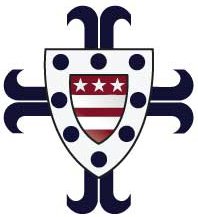THE CARILLON and TOWER – A GRAND MUSICAL INSTRUMENT
In the summer of 1946, Professor Arthur Lynds Bigelow, then working in the Department of Graphics and Engineering Drawing at Princeton University, was secured as consultant for the Chapel’s carillon. Bigelow was Princeton University’s first carillonneur. He studied engineering at the University of Pittsburgh and went abroad in 1930 to attend the Royal Carillon School in Mechelen. He remained in Europe for 11 years, during which time he became the carillonneur for Louvain University.
Arthur Bigelow testing a bell
Although a skilled performer, Bigelow was best known as a tonal designer of cast bell carillons in the United States. His book, The Acoustically Balanced Carillon (1961), changed the way modern carillon bells are shaped and tuned. He cast and tuned his own experimental bells and worked with the Paccard Bell Foundry of Annecy, France, the bell foundry chosen to provide the additional bells for the Chapel’s carillon. Pitch, tuning and balance between two sets of bells from two different foundries (Meneely and Paccard) would have match perfectly.
It was decided to increase the number of bells to 56, making it a complete 4½ octave concert instrument. At that time it was to be the third largest (by number of bells) in North America. (Currently a carillon of 58 bells, it is ranked 20th in size by number of bells in North America.)
Not only was Arthur Bigelow in charge of the tonal design, building the steel frame to suspend the bells within the belfry, the mechanical workings and the keyboard, and supervising the installation, he influenced the belfry design that turned a bell tower into a carillon tower.
From a Bell Tower to Carillon Tower
As seen above, the Chapel’s tower grew from a small bell tower, with four small openings in Medary’s rendering, to a larger tower, still with four relatively small belfry openings in the 1941 Cornerstone Dedication Program drawing, to the early 1950’s completion study model with somewhat larger, but thin, vertical openings – not the best for a carillon. Finally, under Arthur Bigelow, the tower was redesigned with larger openings, correct acoustical proportions, and a feature that changed an architect’s concept of a bell tower into a successful musical instrument – open corners.
Corner belfry openings for equal sound around the tower
Instead of the sound of the carillon coming out of the tower from just four openings with diminished volume at the corners, the new design allows the sound to be heard evenly all around the tower except for the southwest corner where interior circular stairway is located. The well-tuned bells, the correct proportion of openings to solid reflective stone, and the arrangement of the bells within the belfry all make this carillon one of the most beautiful.
With the tower nearing completion in 1953, a steel framework was constructed within the belfry to hold the carillon and a playing cabin in the middle of the bells. The playing cabin would contain a keyboard from which the carillonneur could play the bells.
Playing Cabin within the belfry. Six large bells are below; mid-range and treble bells are above.
The 28 Meneely bells were taken from the small tower on the west side of the Chapel and hoisted up into the frame. The 28 newly cast Paccard bells were added to make a carillon of 56 bells, making this a carillon weighing 26 tons.
Treble Paccard Bells
Paccard Treble Bells. Coil springs help each bell’s clapper to return to its rest position.
Mid-range Meneely Bells
Arthur Bigelow making final adjustments
Low-range Meneely Bells
While the bell frame is steel, all bells are mounted on large wooden beams to isolate the low frequency vibrations created when the clapper strikes the bell.
c. 1963 Boy Scout Commemorative Patch
It wasn’t until 1963 that the carillon was finally completed with the addition the “Wake” and “Midway” Islands bells for a total of 58. Frank Law, Chapel Carillonneur, played for a gathering of 5,000 Boy Scouts on the hill in front of the Chapel for their annual winter pilgrimage to Valley Forge. All scouts in attendance got this patch commemorating the additional two new bells.













